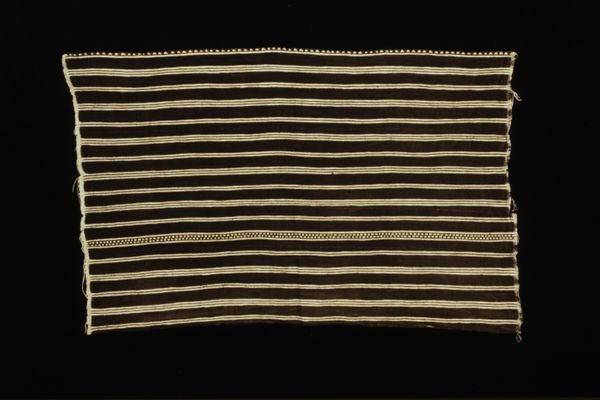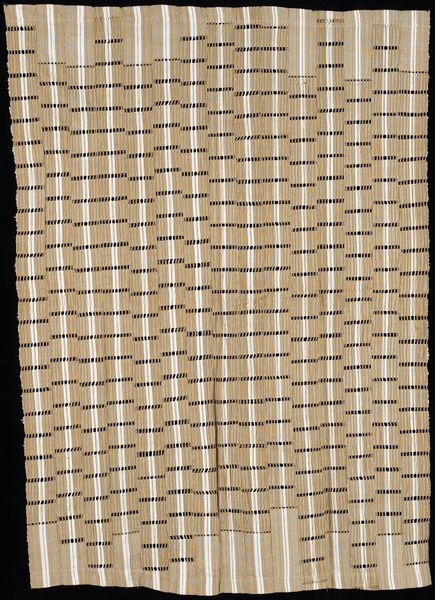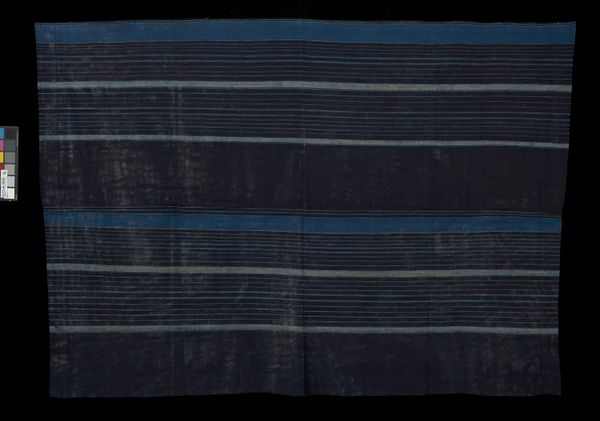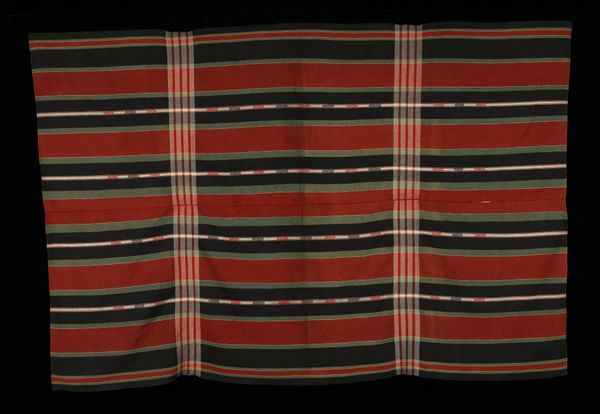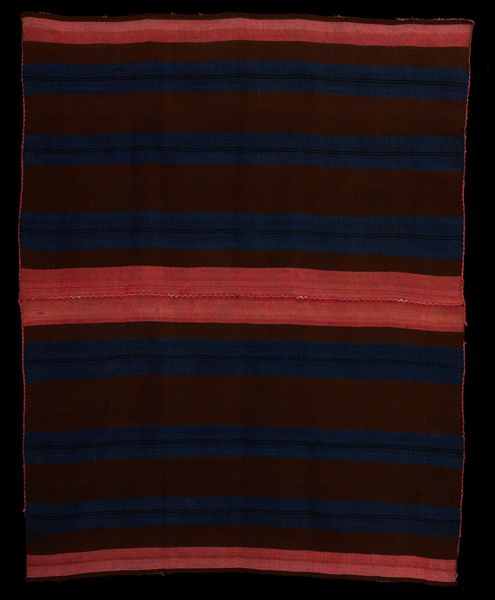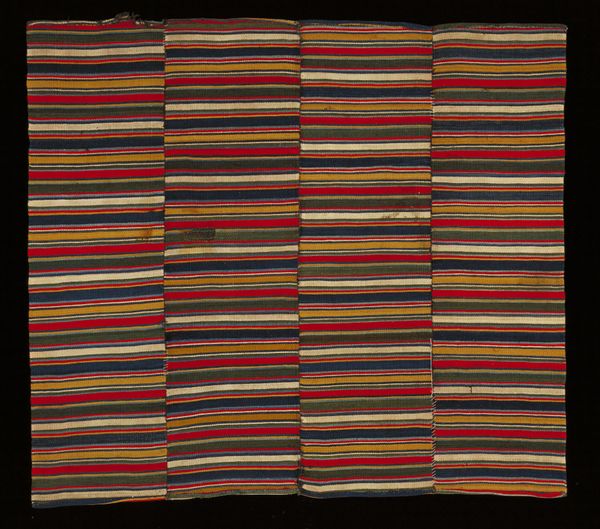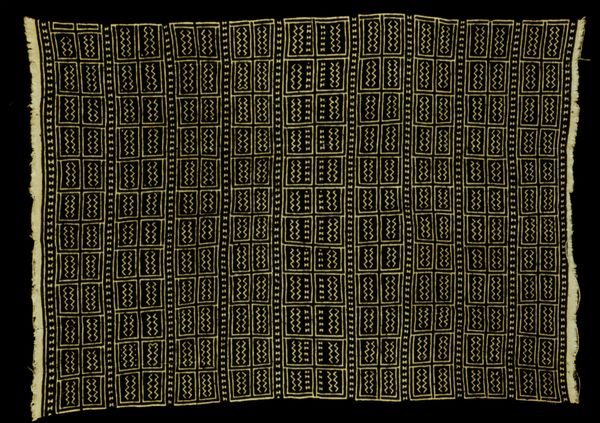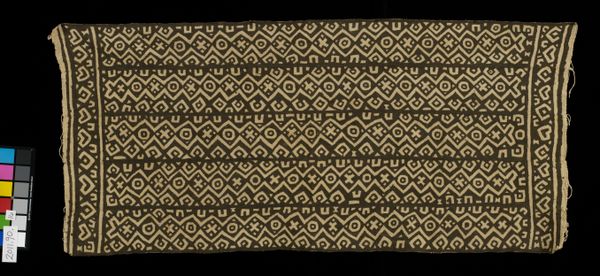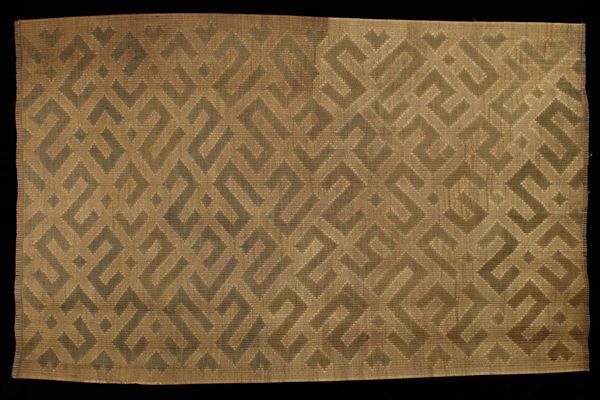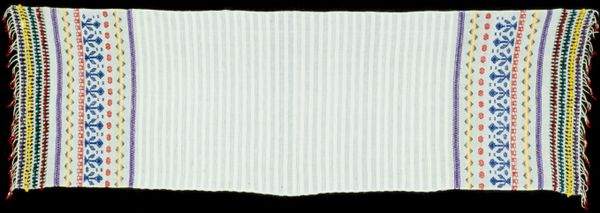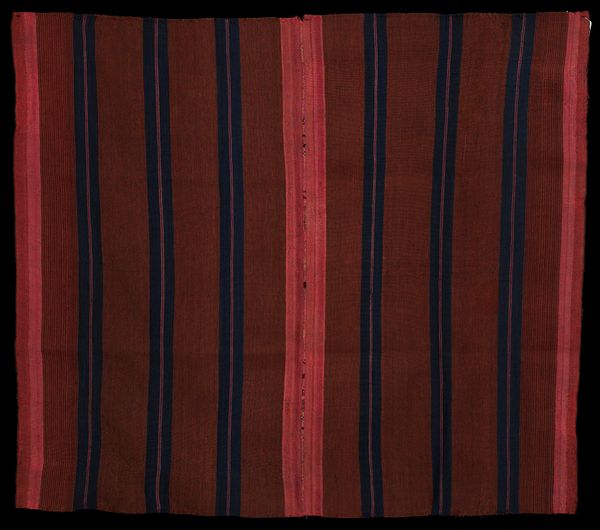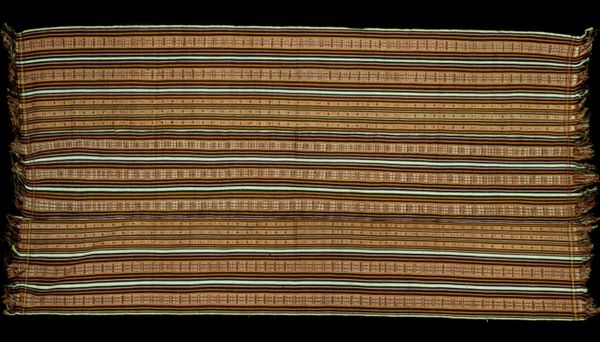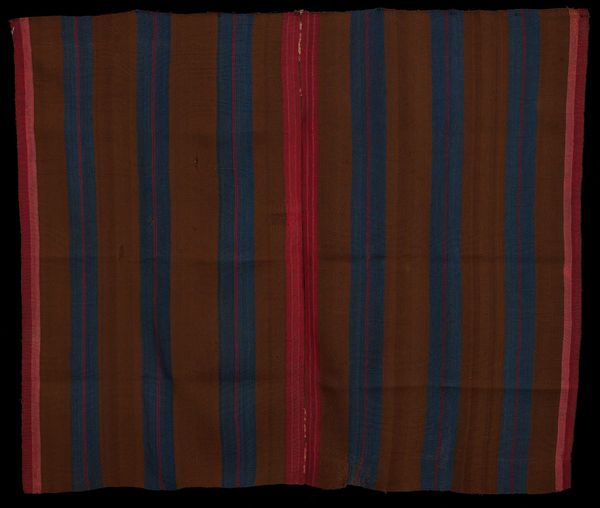
fibre-art, textile
#
african-art
#
fibre-art
#
textile
#
geometric pattern
#
geometric
Dimensions: 30 3/8 x 48 in. (77.15 x 121.92 cm)
Copyright: Public Domain
Curator: Let’s turn our attention to this eye-catching “Mud cloth skirt,” which dates back to the 20th century. It's currently held here at the Minneapolis Institute of Art. Editor: It looks incredibly tactile, almost primal. The deep, earthy tones against the stark white lines… it's striking in its simplicity. Curator: Indeed. This textile, primarily made of cotton, is a superb example of African art and the pattern-and-decoration movement. "Mud cloth" is also referred to as "bògòlanfini." It’s more than just a pattern; it represents a deeply ingrained cultural tradition in Mali. Editor: Bògòlanfini…I love that the cloth's name suggests its elemental origins. It invites consideration of how traditional practices like bògòlanfini can act as a means of cultural and personal expression, while equally raising complex questions around authenticity, appropriation, and neocolonial art histories. Curator: The patterns are usually applied after the cloth is fermented in mud dyes, layering both physical substance and symbolic weight into the finished textile. What do you make of this design? Editor: The bold, horizontal lines and geometric shapes evoke a sense of grounding. Perhaps even reflecting on ancestral lineage and continuity in its simplicity. The imperfection feels important too. It's a stark contrast to our culture of manufactured perfection and reminds me that clothing can be inherently rebellious. Curator: That resonates. Historically, the production and use of bògòlanfini were community affairs deeply rooted in rituals tied to key transitions in life, such as puberty and marriage. The symbols worn told stories of the wearer. The knowledge needed to create such cloths would be shared across generations. Editor: Considering the skirt in this setting, within a museum, also adds another layer. How does its presence here alter our understanding of it, its makers, and its original cultural setting? Curator: Exactly. It invites a larger conversation on the complexities of displaying cultural objects and the role museums play in representing—and potentially misrepresenting—these histories. Editor: It certainly does. Reflecting on how textiles, traditionally the work of women, have long been relegated to "craft" but increasingly are recognised as vital forms of visual and social communication encourages re-evaluation of art history. It feels like this mud cloth holds the weight of histories and possible futures. Curator: Indeed. Thank you for offering that insightful and nuanced perspective. It sheds new light on how we might look at this artifact.
Comments
No comments
Be the first to comment and join the conversation on the ultimate creative platform.

